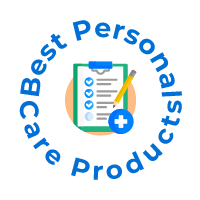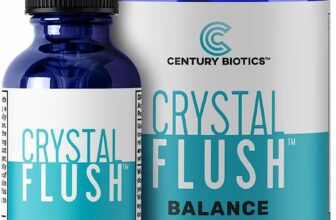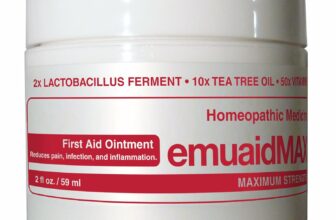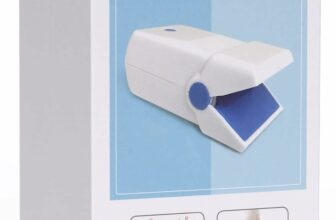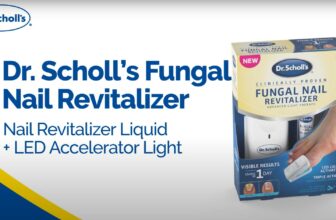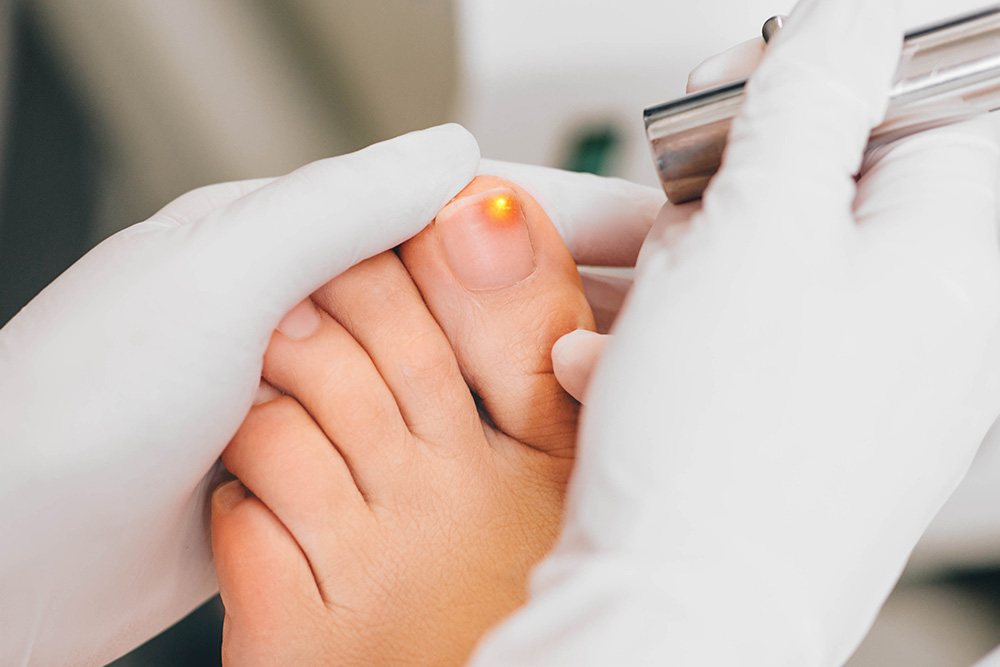
Pros and Cons of Laser treatment for toenail fungus: As millions globally grapple with the persistent issue of nail fungus, many are looking to laser treatments as a potential solution. Laser therapy, with its futuristic appeal, offers the allure of rapid and painless recovery, promising to instantly eliminate and cure toenail fungus infection and restore healthy toenails.
Podiatrist and at home nail fungus laser like Onychom Laser by Dermachom Laser and Dr Scholl’s Fungal Nail Revitalizer, often hailed as the zenith of foot care technology, come with a hefty price tag, often soaring above $1,000 for a single treatment. But are these sophisticated laser device gadgets the panacea we’ve all been waiting for?
The unfortunate reality, underscored by meticulous research and clinical studies, reveals a glaring gap between the lofty promises and the actual effectiveness of laser treatment for nail fungus and its anti fungal mechanisms that are trying to replace previously existing therapeutic options.
You might be astounded to learn that laser toenail fungus treatments, cure rates markedly lag behind those achieved by both oral medications and topical medications, with limited evidence substantiating their ability to fully eradicate pathogenic fungal growth in the infected nail.
As we embark on a detailed exposition of laser treatments encompassing aspects such as the procedure, recovery, risks, and comparative effectiveness, we aim to shed light on the vital question: “Are we being too optimistic about laser treatments for toenail fungus?“. You can also check out our analysis of different laser devices in our dedicated comparison article.
Moreover, we invite you to explore a potent, economical, and promising topical alternative that stands out in a crowded market of antifungal solutions – the best otc toenail fungus treatment: Swissklip Medi-Care Anti-Fungal Stick.
What is Laser Treatment for Toenail Fungus?
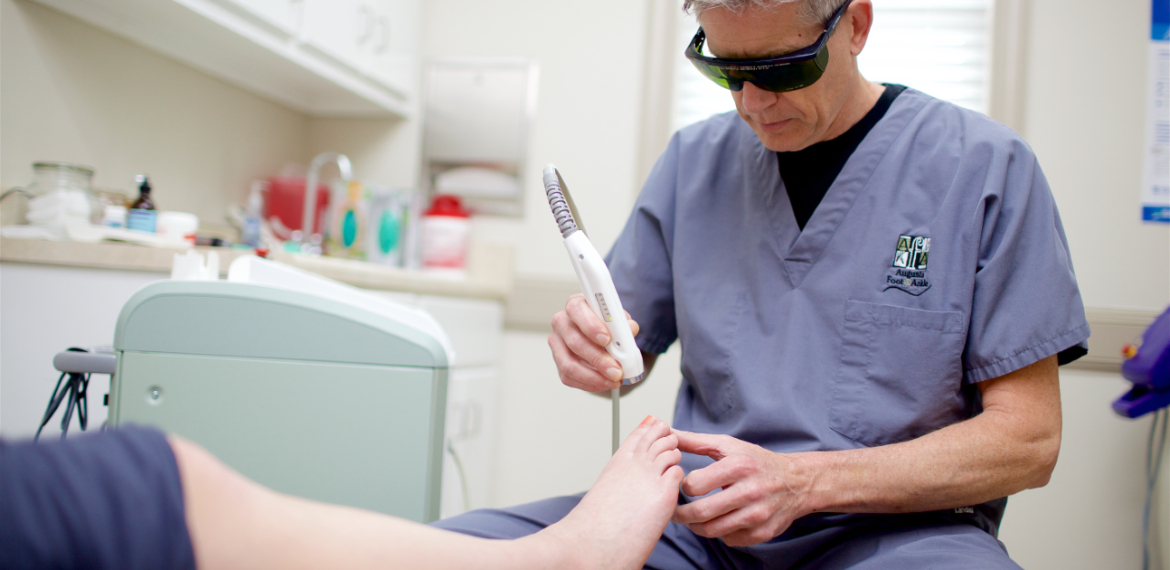
Laser treatment for nail fungus operates on a fairly straightforward yet advanced principle: utilizing the power of laser beams to target and eradicate the fungal presence lurking within your affected nails.
This technique works meticulously by escalating the temperature of specific layers of the nail that are affected, with the primary objective of annihilating the genetic material that fuels the growth and perpetuation of the nail fungus. Through this approach, it strives to not only eliminate the existing infection but also prevent future recurrences, paving the way for healthier and clearer nails.
However, while it may sound promising, it is essential to note that this method may come with substantial costs and varying degrees of effectiveness, urging individuals to explore other potentially more reliable and economical alternatives for their foot care needs.
How does Laser Treatment for Nail Fungus work?
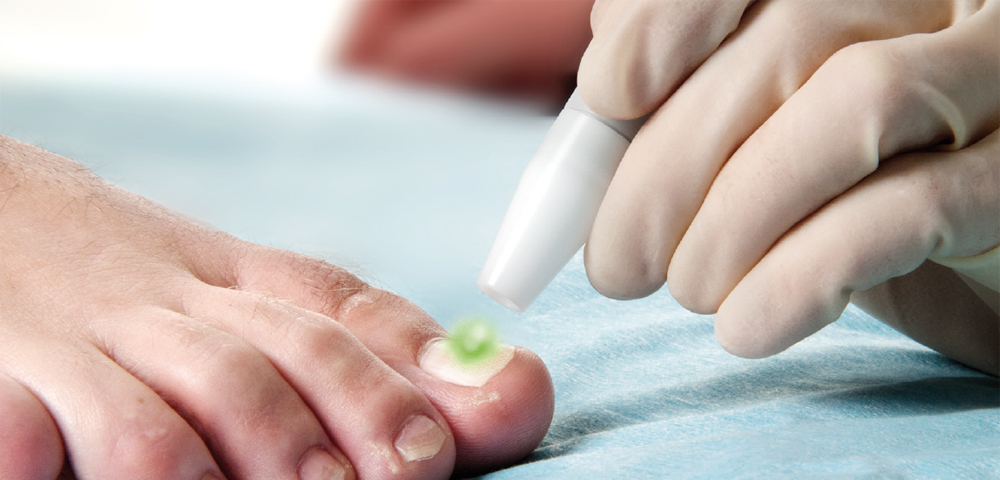
Laser treatment for nail fungus operates through the deployment of sophisticated laser devices, which employ either solid-state lasers or variants using carbon dioxide (CO2) to battle the persistent fungal infection residing within your toenails.
These powerful lasers emit pulses of energy, translating into heat, that have the capability to infiltrate the layers of the nail plate and target the nail bed – the very place where the nail fungus thrives. This procedure, tends to require a series of sessions as a single one might not suffice in completely treat toenail fungus, improve new nail growth and eradicating the nail fungus, and showing only temporary cosmetic improvement.
You might come across several kinds of laser treatments in the market, utilizing lasers like yttrium-aluminum-garnet (YAG laser) which operates at various wavelengths. These lasers work diligently by turning the tissue with infection into gas, disintegrating not only the fungal entity but also impacting the surrounding skin and nails, with the added benefit of sterilizing the area to prevent future fungal growth.
Yet, it is essential to bear in mind that the results can be inconsistent, and a “temporary increase in clear nails” is often the best-case scenario according to FDA evaluations. Hence, while the science behind it is promising, the effectiveness might not be up to the mark, necessitating multiple treatments and visits to expert podiatrists for substantial results.
Does Laser Treatment Work? The Real Truth
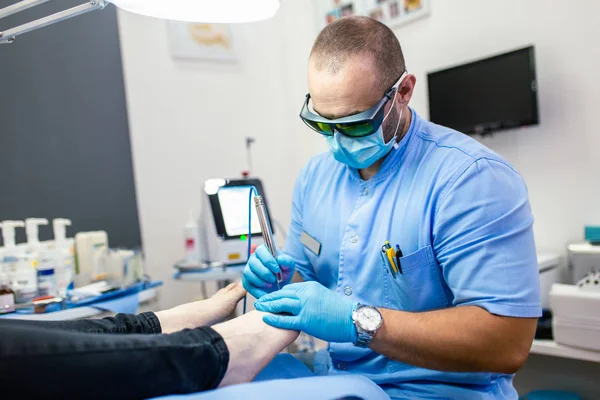
In the realm of toenail fungus solutions, laser therapy has been a popular topic of discussion since its inception in the 1980s. Many people question if laser therapy work, and it seems time has come to pull back the curtain and reveal the stark realities surrounding the efficiency and safety of laser therapy for toenail fungus infection compared to traditional treatments.
Here we analyze whether treat toenail fungus with laser of the affected toenail hold up to the scrutiny, especially when compared to proven and cost-effective alternatives.
A Closer Look at the Clinical Evidence
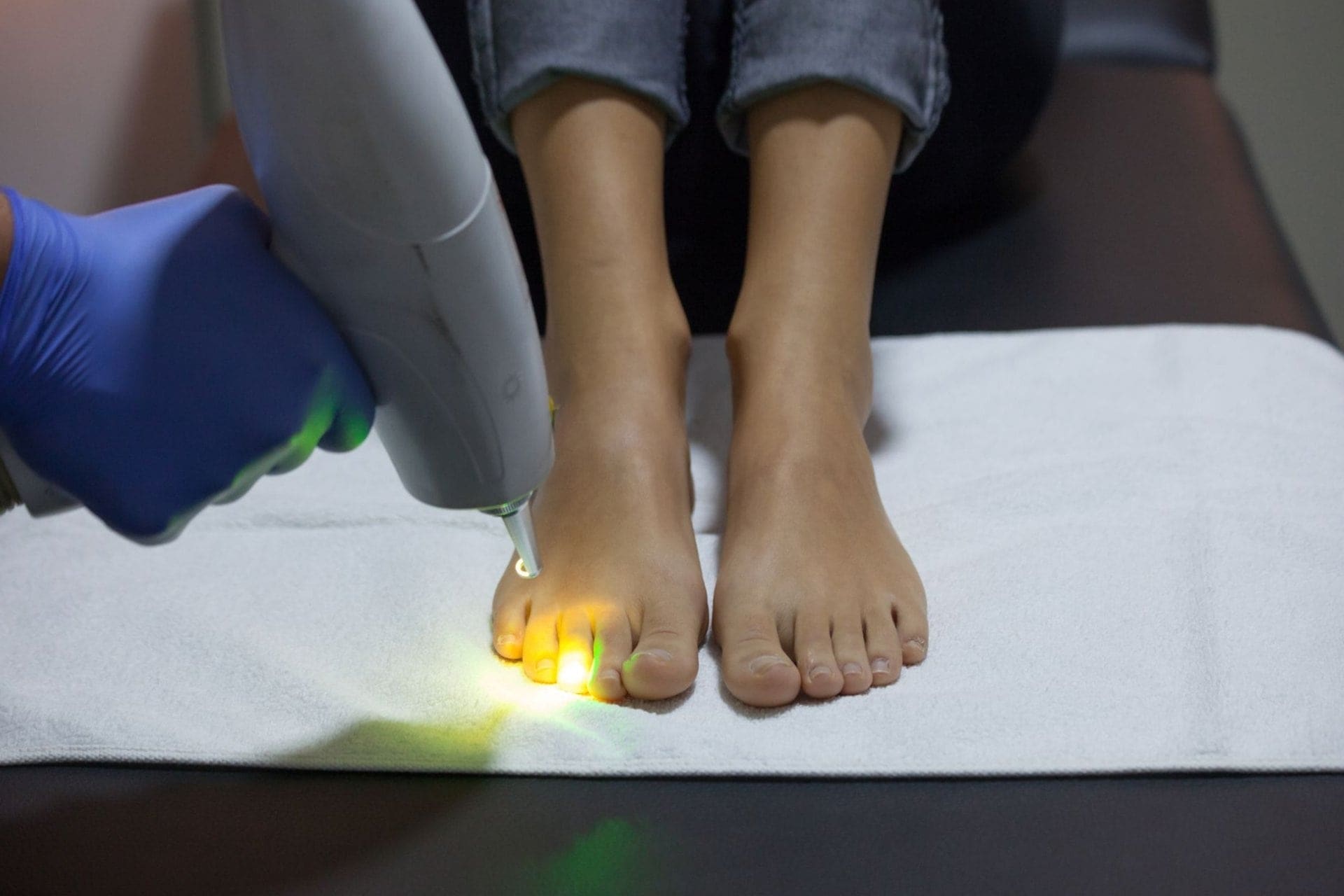
A myriad of scientific voices have begun to question the proclaimed effectiveness of laser treatments for toenail fungus.
While laser technology has shown effectiveness in other medical spheres like cataract surgery and dental work, its efficacy in addressing fungal infection of the nail is notably sketchy in most patients unlike other treatments such as oral antifungal medications.
According to a Harvard Medical School publication, although laboratory studies hint at some potential in combating fungal organisms, the clinical trials involving humans are considerably limited and far from being conclusive.
Further cementing the skepticism, recent peer-reviewed research published in the National Library of Medicine indicates a concerning inconsistency in the reported effectiveness of laser treatments.
The studies noted a significant shortfall in the cure rates when compared to other different treatments such as conventional oral medications and topical antifungal creams, underscoring the limited evidence of laser technology’s ability to eradicate pathogenic fungi effectively.
The glaring inconsistencies and potential risks associated with laser therapies stand in stark contrast to the proven efficacy and affordability of treatment options such as topical solutions. In this battle against toenail fungus, it is wise to opt for a solution grounded in scientific evidence, promising not only healthier nails but also clear nail and peace of mind and financial prudence.
In the rapidly evolving field of podiatric dermatology, professionals offer traditional treatments alongside newer modalities for onychomycosis treatment. Recent treatment protocols have shown a keen interest in laser systems, with certain laser manufacturer promoting their technology as the pinnacle of fungal cure.
However, a comprehensive review of peer-reviewed literature investigating the efficacy of various treatments has noted some key insights. While laser energy does facilitate clear nail growth in some cases and oral medication remains risky; topical treatments are a cornerstone of systemic therapy, often producing superior outcomes when compared to other methods.
Pros and Cons of Laser Treatment for Toenail Fungus
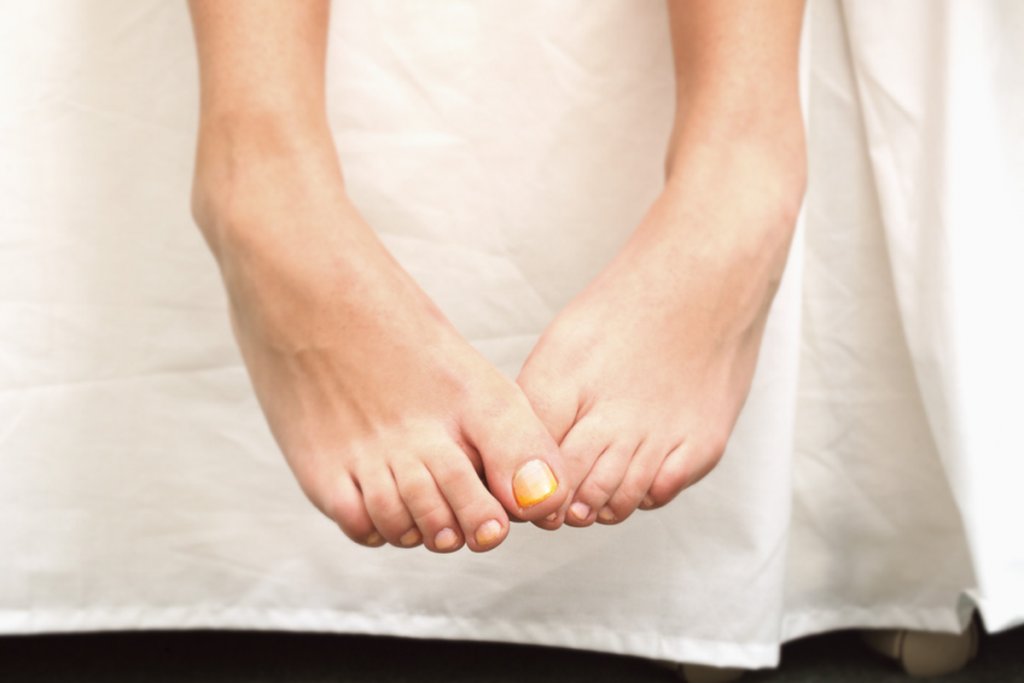
Pros of Laser Therapy:
- Non-Invasive: Unlike surgical procedures, laser treatment for nail fungus doesn’t involve any cuts or incisions, reducing the risk of infection.
- Quick Treatment Sessions: Typically, a session can be completed in less than 30 minutes.
- No Need for Medication: Patients won’t have to remember to take pills daily, which can be beneficial for those who struggle with oral medications adherence.
- Low Risk of Side Effects: Compared to some oral medications, laser treatments might have fewer side effects.
Cons of Laser Therapy
- Inconsistent Laser Treatment Effectiveness: Laser treatment doesn’t guarantee results. Some patients who seek laser treatment see no improvement in their nail fungus, even after multiple sessions.
- High Costs: The procedure is expensive, often not covered by insurance, and might require multiple sessions which can accumulate considerable expenses.
- Discomfort During Procedure: Patients might experience a warming sensation, mild pain, or a burning feeling during the treatment.
- Lack of Long-Term Data: Being a relatively newer treatment, there isn’t sufficient data on its long-term effects or sustained effectiveness.
- Recurrence Possibility: Toenail fungus can return even after treatment, necessitating further treatments or alternative methods.
- Potential for Thermal Damage: The risk of burns or damage to surrounding tissues if the procedure isn’t done correctly can be a significant concern.
- Time Commitment: Despite individual sessions being quick, the need for multiple sessions, along with aftercare and follow-up appointments, can be time-consuming.
- Limited Availability: Not all podiatry clinics offer this treatment, making it harder to access for some patients.
- Risk of Infection: Although the procedure is considered non-invasive, there’s still a slight chance of infection, especially if aftercare instructions aren’t followed correctly.
- No FDA Approval for Some Devices: While some devices have received FDA clearance, others haven’t, raising concerns about their safety and efficacy.
- Post-Treatment Limitations: Patients may be advised to avoid certain activities or footwear temporarily after the treatment, which can be inconvenient.
- Requires a Trained Professional: The outcome and safety of the procedure are highly dependent on the expertise of the practitioner, and finding a well-trained professional might be challenging.
- May not Address Underlying Causes: Laser light targets the fungus but may not address underlying issues that make an individual susceptible to fungal infections, such as poor circulation or immune system weaknesses.
Given these numerous concerns associated with laser therapy, many individuals are turning to more natural, less invasive options.
Swissklip Medi Care Toenail Fungus Treatment offers a practical, natural, and effective solution without many of the drawbacks associated with laser treatments.
The Downsides of Laser Therapy
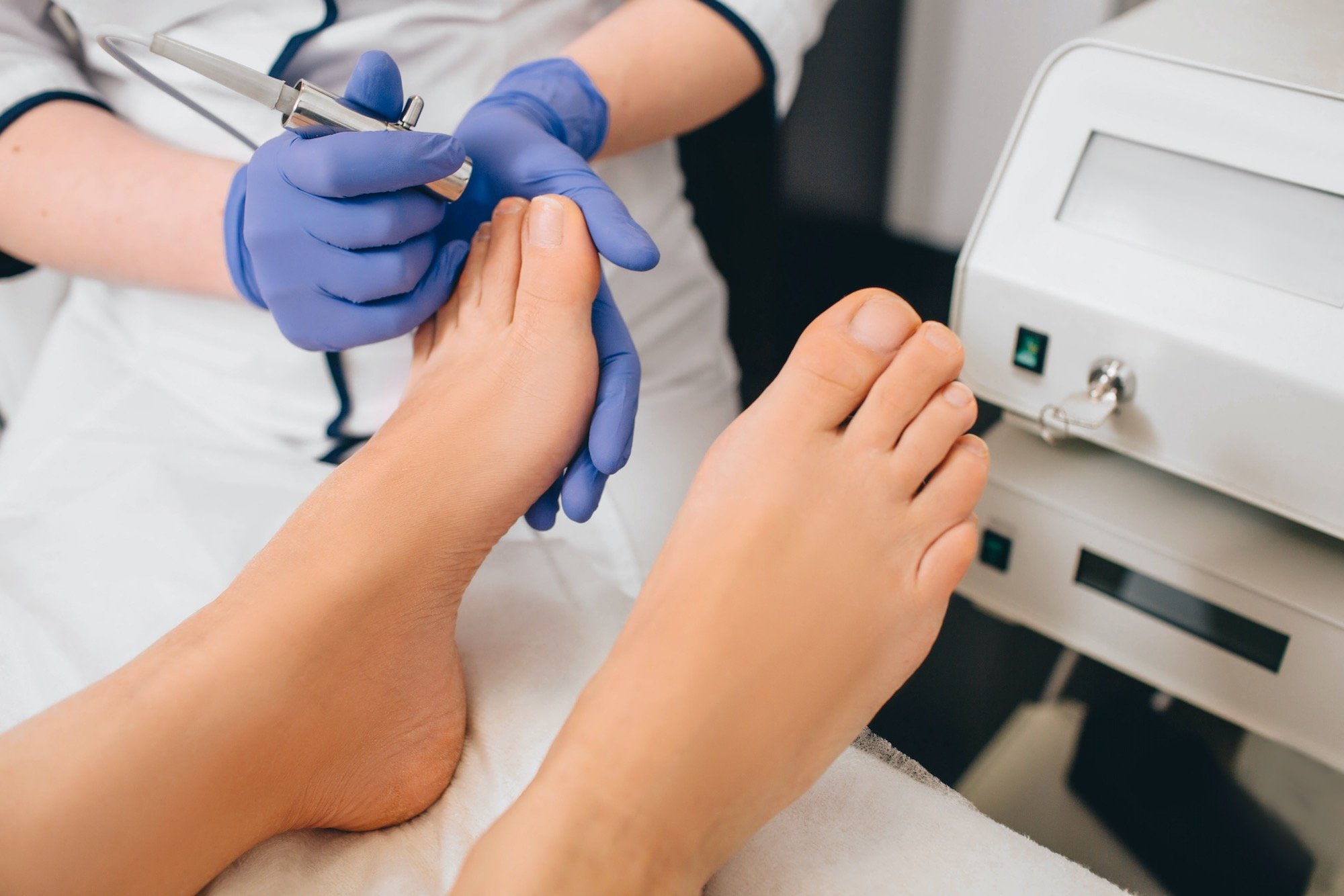
When it comes to battling the persistent issue of toenail fungus, laser therapy has often been heralded as a modern solution.
However, digging deeper into the reality of laser treatments reveals a scenario far less rosy. This section aims to shed light on the various downsides of opting for laser therapy in treating toenail fungus, and why other alternatives present a more sensible choice.
The Illusion of Efficacy
Despite its widespread publicity and introduction in the 1980s, laser therapy has been lurking under the shadow of inconsistency and inefficacy.
Though the US FDA approves laser treatments, the underlying technology seems to be getting a nod more for its cosmetic benefits than its actual potency against fungal pathogens.
Scientific insights from reputable sources like the Harvard Medical School and National Library of Medicine indicate that the effectiveness of lasers as a standalone treatment is reported inconsistently, with limited evidence of their ability to thoroughly eradicate fungal infections.
This inconsistency casts a long shadow of doubt on the reliability of laser therapy as a go-to solution for effective treatments for toenail fungus.
Side Effects: More Than Meets the Eye
As all potential patients, you are entitled to know the full story behind laser therapy’s safety claims. While the therapy is deemed safe by regulatory bodies, it does not come without its share of side effects.
From causing significant pain to inducing bleeding in the surrounding nail area, the therapy could take a toll on your well-being. These side effects are not to be taken lightly, as they add an additional layer of distress and discomfort to an already nagging problem.
The Staggering Costs of Laser Treatment for Toenail Fungus
Diving into the financial implications, one cannot overlook the hefty price tag accompanying laser treatment.
With sessions costing anywhere between $200 and $700, the treatment demands not only a substantial financial investment but also a considerable time commitment, with effective results, if any, manifesting over 6 to 18 months of consistent treatment.
The cost, dictated by factors such as the clinic chosen, geographic location, equipment utilized, and the number of treatment sessions required, this procedure is often viewed as cosmetic by insurance companies and healthcare provider, leaving many patients to bear the brunt of the substantial expenses.
The Superiority of Topical Treatments for Nail Fungus
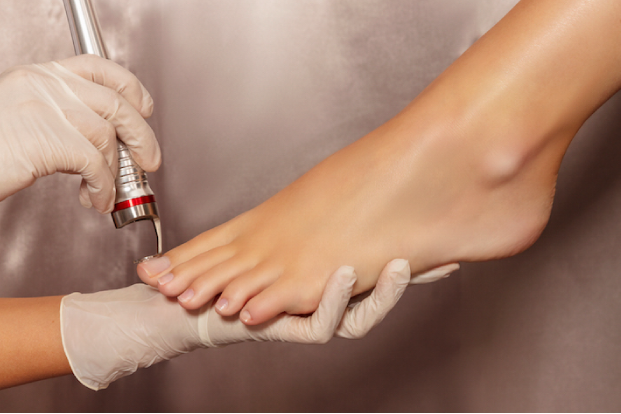
In a scenario where laser therapy fails to prove its worth both in terms of efficacy and economic feasibility, it becomes prudent to turn towards reliable, affordable, and effective alternatives.
Topical solutions, exemplified by the Medi-Care Anti-Fungal Stick, have proven to be a beacon of hope. Boasting a potent blend of natural ingredients, this remedy promises not only affordability but also efficacy in restoring healthy skin and nails, steering clear of the risks associated with laser treatments.
The Anti-Fungal Stick emerges as a beacon of hope, offering a potent blend of herbal ingredients designed to restore the health of your skin and nails without adverse side effects. At a fraction of the cost of one to three treatments, this product stands testament to the fact that effective solutions need not come with an exorbitant price tag.
Introducing the Medi-Care Anti-Fungal Stick
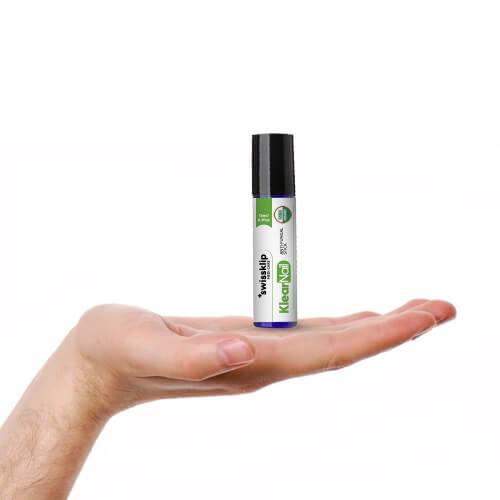
In the league of topical treatments, the Medi-Care Anti-Fungal Stick emerges as a champion. This miracle worker, priced at just $26.99, promises to be a powerhouse in restoring the health of your skin and nails.
Crafted with a potent blend of herbal ingredients, this solution goes beyond just alleviating symptoms, offering a comprehensive treatment to nourish and rejuvenate your nail bed effectively.
Signs of Improvement
As you embark on your journey with this groundbreaking product, you can anticipate visible signs of improvement in a considerably shorter span compared to laser treatments.
Your nails will gradually regain their normal shape and natural sheen having soon a clear nail, and the skin surrounding them will reflect a healthier glow, a testament to the underlying healing process facilitated by this effective topical solution.
Unveiling the Superior Alternative to Laser Treatment for Toenail Fungus: Your Path to Healthier Toenails
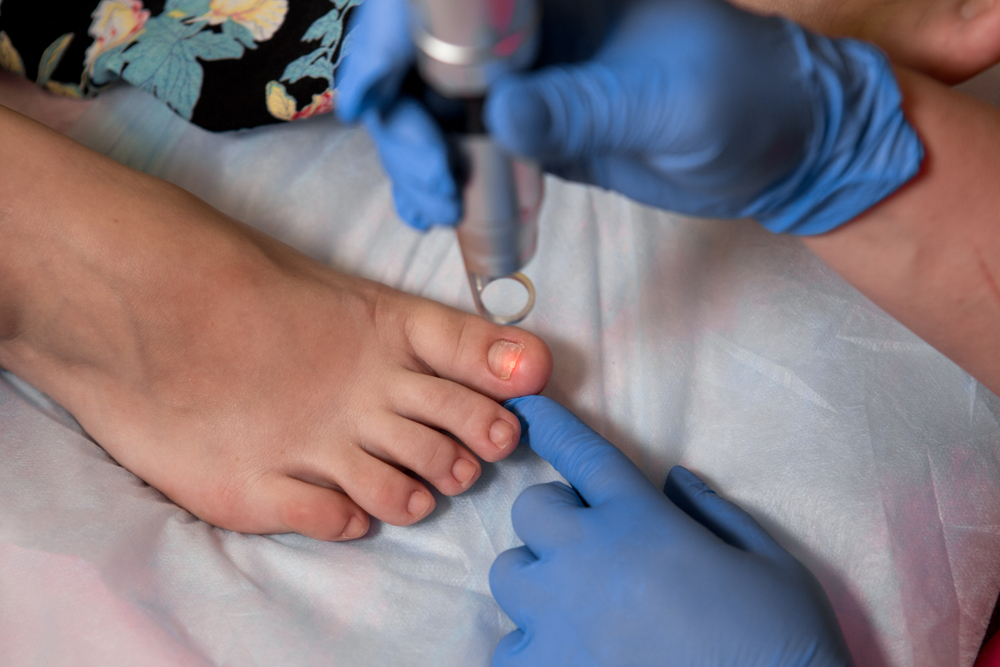
As we draw this discussion to a close, the glaring discrepancies and potential pitfalls associated with laser treatment for toenail fungus cannot be sidelined.
Despite entering the medical scene with a promise of technological advancement and heightened efficacy, laser therapy seems to have faltered in its steps, struggling to provide a viable and long-term solution for individuals grappling with this persistent issue.
We cannot overlook the exorbitant costs attached to laser treatments, a financial burden that seems unjustifiable given the sporadic success rates and the looming threat of side effects.
The substantial investments, both financial and temporal, appear to overshadow the potential benefits, casting a long shadow of doubt on the overall effectiveness of this treatment modality.
Moreover, the approval of these laser devices by the FDA, based predominantly on their cosmetic benefits rather than a consistent record of eradicating the fungus, seems to paint a not-so-rosy picture of what one might expect when venturing down this path.
But all is not lost in the battle against toenail fungus. As we have highlighted, there exists a beacon of hope, a pathway that not only promises results but delivers them without causing distress to your wallet.
Therefore, as you stand at this crossroads, contemplating the road to recovery, it is paramount to make a choice that is grounded in research, effectiveness, and practicality.
As we conclude, let us usher in a new era of toenail fungus treatment, where quality, affordability, and efficacy walk hand in hand, guiding us towards a path of health and well-being. Let us bid farewell to the unreliability and inconsistencies that have marred the journey of many who have ventured into the world of laser treatments.
With foresight and discernment, we urge you to embrace a solution that stands true to its claims, offering not just hope, but a tangible and affordable road to recovery.
Your Golden Ticket to Fungus-Free Toenails Without Breaking the Bank!
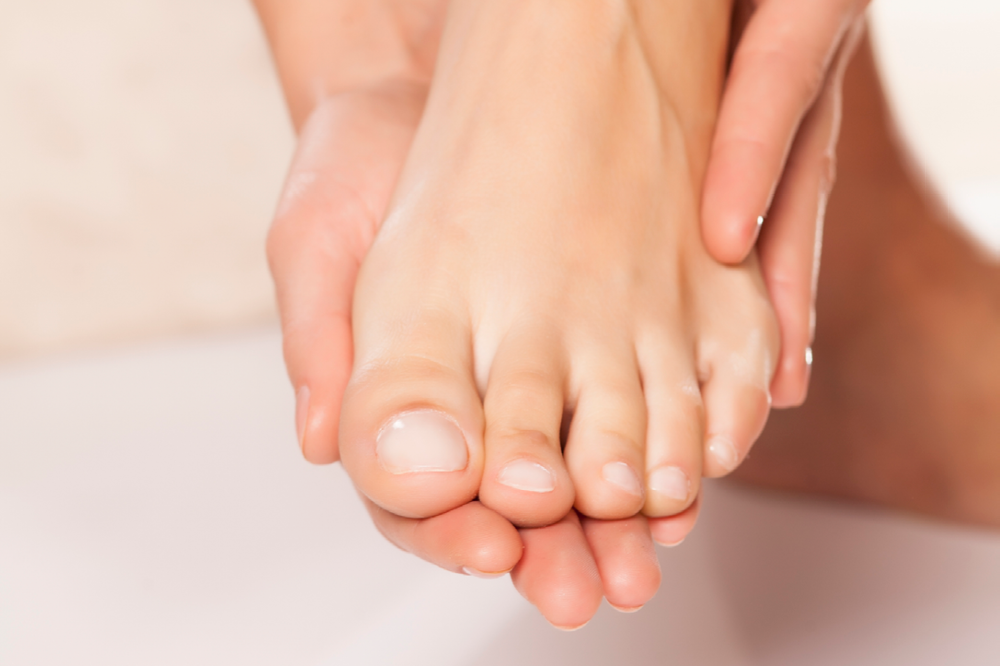
We know you’ve got a ton on your plate, and the last thing you need is to wrestle with toenail fungus while burning a hole in your pocket.
Picture this: You’ve decided to give laser treatment a try, you’re shelling out thousands upon thousands… and then, ouch! Not only does your wallet feel significantly lighter, but you might even experience some not-so-pleasant side effects like pain and potential bleeding around the nail area. Doesn’t sound like a walk in the park, does it?
Hold your horses, because we’ve got a delightful news flash for you! Why wander down the pricey and risky laser treatment route, when the answer to your troubles might just be a simple click away?
It’s the Medi-Care Anti-Fungal Stick – a true game-changer in the world of foot care. This little wonder stick is packed with natural ingredients that won’t just be gentle on your skin but also fiercely effective in bidding goodbye to that nasty fungus.
And guess what? It won’t cost you an arm and a leg – we’re talking about just $26.99, a price that will leave both you and your bank account smiling!
So, let’s get the ball rolling, shall we? It’s time to treat yourself to the simple, affordable, and most importantly, effective solution you truly deserve. Grab your Medi-Care Anti-Fungal Stick today and step into a fungus-free, fabulous future!
Take the Easy Route to Healthy Toenail with Swissklip – Order Now!
Here’s to waving goodbye to toenail fungus, the smart way!
Cheers to you and your soon-to-be happy, healthy toenails!
